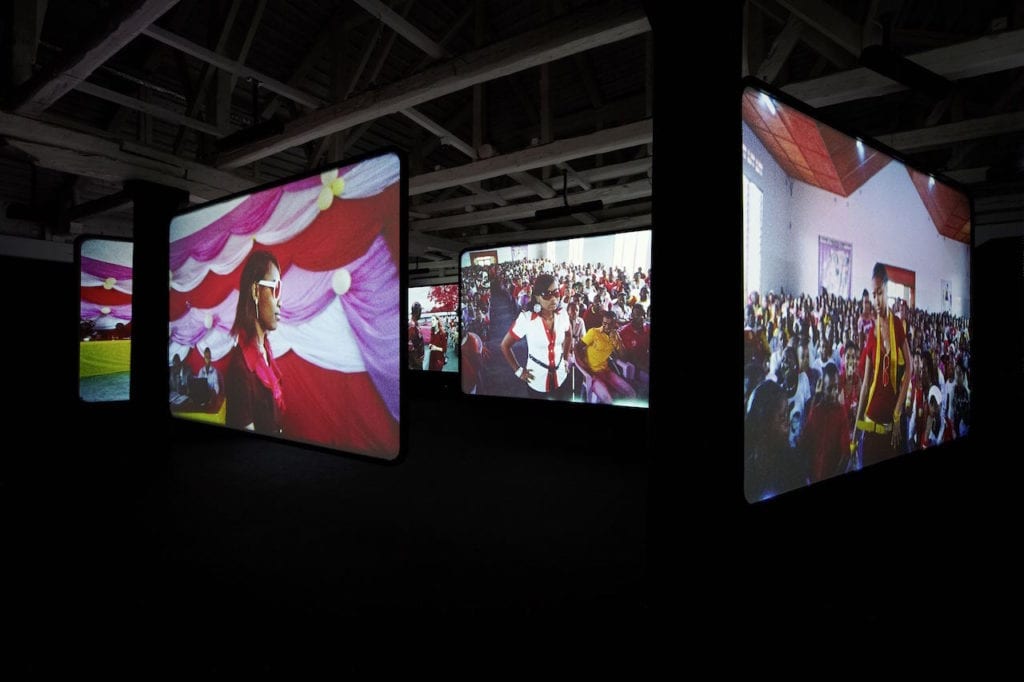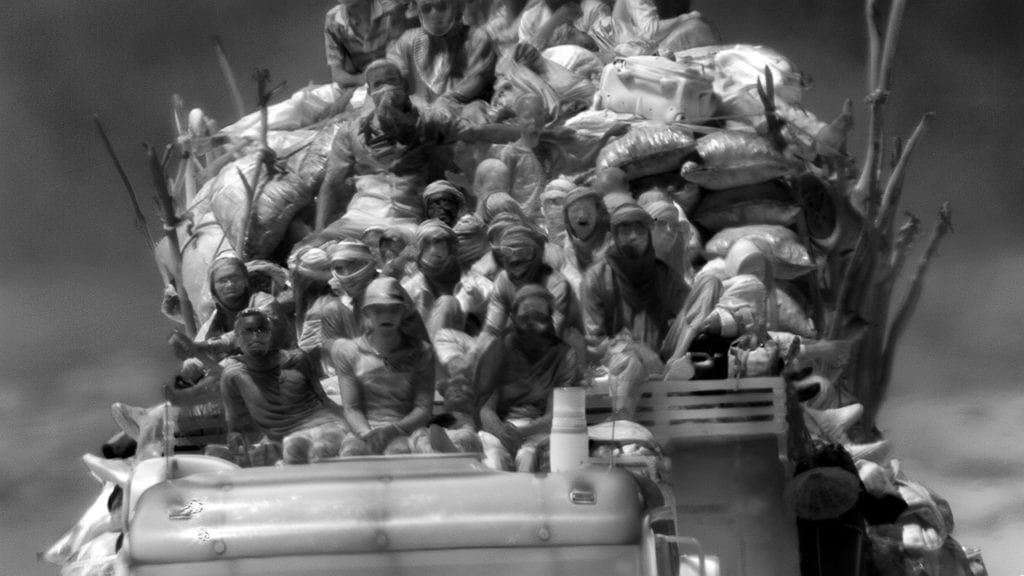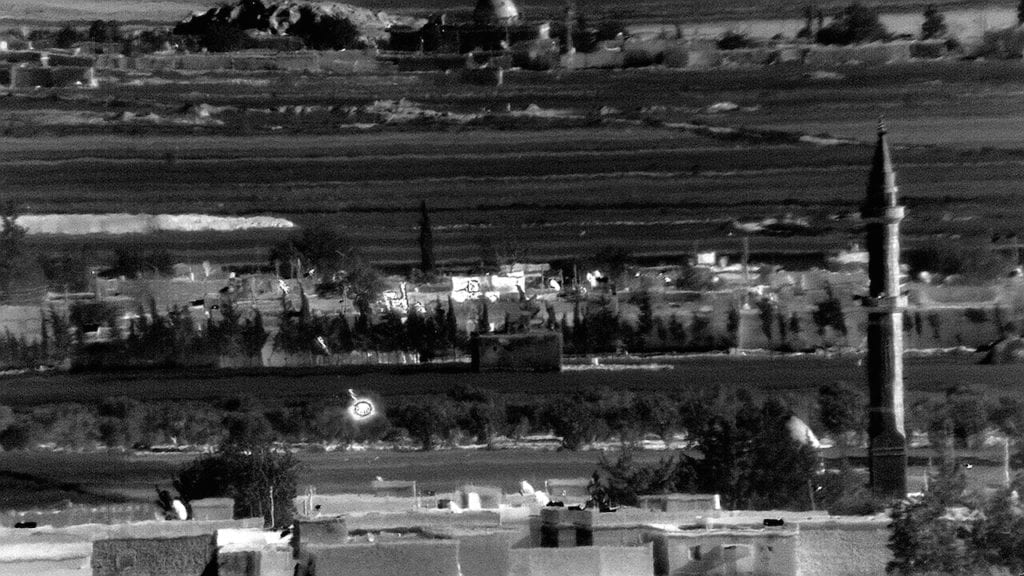Using it in the Congo, Mosse felt he had “crossed a threshold into fiction”, blending traditional reportage, and creating documentary images that seemed surreally heightened and metaphysical. “I wanted to use a highly unstable infrared film technology as a way of thinking through the conflict,” he told Aperture magazine.
“My concept was very raw and underdeveloped. Embarking upon the journey, I found myself challenged in many ways, not least because I had no knowledge of moving through this difficult land, and no experience of using this type of film. I was dealing with the unknown, negotiating my own ignorance. Since infrared light is invisible to the human eye, you could say that I was literally photographing blind.”
In an interview with BJP, Mosse explained how the idea unfolded. “I wanted to export this technology to a harder situation, to up-end the generic conventions of calcified mass media narratives and challenge the way we’re allowed to represent this forgotten conflict. I wanted to confront this military reconnaissance technology, to use it reflexively in order to question the ways in which war photography is constructed.”

The Enclave is a haunting watch. It allows us to float through the bucolic front lines of the conflict, following fighters deep into the undergrowth as they blend seamlessly into the bush. We seem to happen across, and then explore, an abandoned army outpost, passing over corpses of soldiers who could not have been more than teenagers.
We’re thrown into the midst of a propaganda rally and swoon over a hilltop, mountains rolling away into the distance, water glinting in the valleys. Then we’re sent down, in a continuous shot, into an ‘internally displaced persons’ camp – a place that could have been drawn straight from Marlow’s recollections in Heart of Darkness.

Yet he adds that, in retrospect, there is a sense of continuity between the two series. “The Congo work was about looking back, using an anachronistic and antiquated technology against its original purpose,” he says.
“It was a way of thinking through photojournalism at a particular moment in the history of documentary photography. It was an attempt to confront some of the questions created for documentarians when we took the step from analogue to digital photography. Incoming is working through similar ideas, but in a different direction. This work is about looking forwards, not backwards.”

“The final images are multi-perspective photographs,” he says. “Some would have 900 cells, each with its own distinct perspective. It’s a technically tricky way of working. The camera pushed us in a certain way – a kind of portraiture that focuses on the refugee’s body. It doesn’t discern skin colour, it doesn’t discern ethnicity; it animalises the subject, treating the subject like a biological trace rather than an individual.
“I feel a lot of the imagery of the refugee crisis is so saturated. I wanted to try and make this imagery of refugees as unfamiliar as possible. When you see the same image again and again, you develop a certain response. I wanted to create work in which we have no automatic response. I tried to take my own crutches away, to give myself nothing to fall back on. I hope that’s the case for the audience too.”
Richard Mosse: Incoming is on show at The Curve, Barbican Centre from 15 February – 23 April. Admission is free www.barbican.org.uk. This article was originally published in BJP’s February 2017 print issue, which can be bought via thebjpshop.com
Richard Mosse: Incoming, the photobook, is also now available to buy from the Mack website, printed in metallic tritone throughout and featuring texts by Giorgio Agamben and Richard Mosse.
Explore Stories
- latest
- agenda
- bookshelf
- projects
- theme in focus
- industry insights
- magazine
- ANY ANSWERS
- FINE ART
- IN THE STUDIO
- PARENTHOOD
- ART & ACTIVISM
- FOR THE RECORD
- LANDSCAPE
- PICTURE THIS
- CREATIVE BRIEF
- GENDER & SEXUALITY
- MIXED MEDIA
- POWER & EMPOWERMENT
- DOCUMENTARY
- HOME & BELONGING
- ON LOCATION
- PORTRAITURE
- DECADE OF CHANGE
- HUMANITY & TECHNOLOGY
- OPINION
- THEN & NOW
